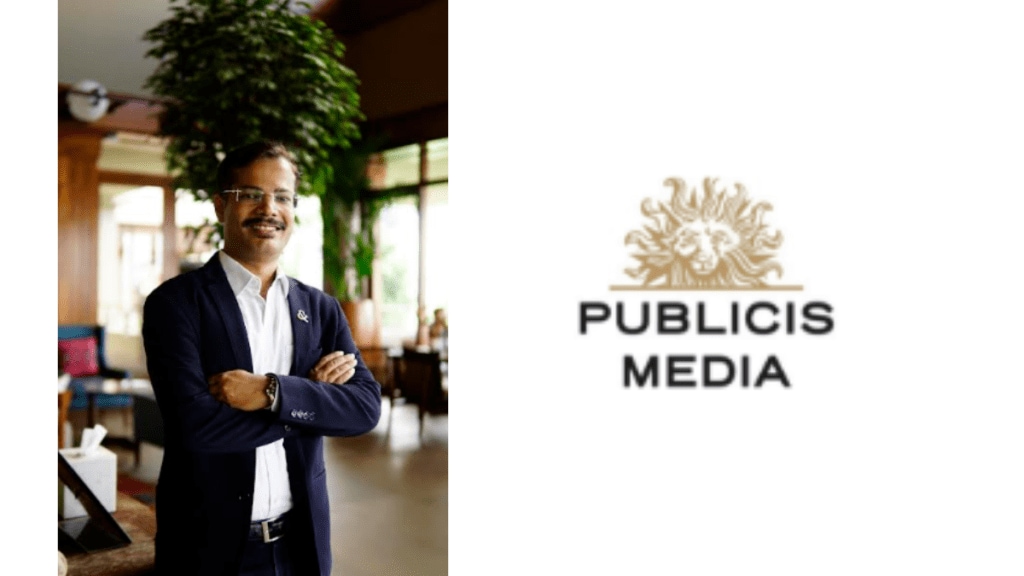‘AI-powered precision, retail media expansion to drive growth’
Publicis Media, which closed 2024 as the world’s largest advertising group, has set an ambitious roadmap for 2025. The company is doubling down on data-driven decision-making, AI-powered automation, and the expansion of retail media networks. In this interview, Lalatendu Das, CEO, Publicis Media South Asia, tells Geetika Srivastava how the network is leveraging technology to tackle the growing fragmentation of media . Edited excerpts:
What were the trends that shaped global advertising in 2024?
In 2024, we saw several tailwinds in advertising media. First, the rise of live sports. It emerged as a dominant force in advertising, fuelled by marquee events such as the Olympics, T20 Cricket World Cup, and regional leagues across markets. With the rise of digital streaming, brands are no longer just investing in traditional TV sports sponsor- ships but are leveraging social media integrations, live commerce, and moment marketing to drive real-time engagement. India witnessed a surge in advertiser interest, with the IPL reaching 448 million viewers and digital-first activations driving ROI.
Second, we saw the emergence of quick commerce. It saw 25%-plus growth in India alone. As platforms extended their reach and expanded into new product categories, they became increasingly relevant for advertisers.
Also, the creator economy went mainstream. India is home to over three million content creators. Brands have tapped into influencer-led advocacy to drive deeper engagement. While influencer marketing may not always be the most efficient channel for pure awareness-building, its impact on trust, community-driven commerce, and high-intent conversions has made it an essential part of modern media strategies.
What are your priorities for 2025?
Our priorities for 2025 centre around data-driven decision-making, retail and commerce media growth, AI-powered automation in media buying, and advanced measurement solutions for optimising return on investment. We are strengthening our AI capabilities to enhance precision targeting, dynamic creative optimisation, and cost-efficient programmatic media buying. Additionally, we are focusing on retail media networks as a key growth avenue, integrating commerce and media to create seamless full-funnel marketing solutions.
How are you leveraging technology to amplify regional nuances?
Take our proprietary tool, CX Loop, that helps analyse regional media preferences and determine the optimal mix of channels. In South India, where TV remains dominant, we blend linear TV with streaming platforms, while in the Hindi-speaking heartland, social media and YouTube play a larger role, necessitating influencer-driven content. Markets such as West Bengal and Maharashtra still exhibit strong print readership, making digital news platforms a key component of engagement.
We integrate AI-powered audience segmentation through Publicis Audience Manager, which combines first-party data with offline retail insights to refine targeting. Additionally, we collaborate with regional publishers, regional-language influencers and digital platforms to create authentic storytelling that connects meaningfully with local audiences.
How is Publicis Media adapting to the dominance of digital platforms?
We have adopted a hybrid media planning approach, balancing traditional and emerging platforms to ensure optimal reach and impact. We leverage AI-driven tools such as Scenario Planner to allocate budgets efficiently across TV, OTT, social media, and retail media, ensuring that brands achieve maximum engagement with minimal wastage.
Our proprietary analytics engine, Publicis iGrowthOS, uses advanced Marketing Mix Models to optimise advertising investments across channels. Publicis Audience Manager, our data clean room integrates first-party customer data with offline retail sales data to enhance audience segmentation and personalisation. AI-powered automation strengthens programmatic media buying, optimising bidding strategies and tailoring ad creatives to maximise impact. We are investing in AI, machine learning, and automation to ensure that our clients stay ahead in the fragmented and competitive digital ecosystem.
How are these factors changing consumer behaviour?
Consumer behaviour is evolving rapidly, driven by digital-first consumption, hyper-personalisation, and the integration of commerce into media experiences. The rise of retail media networks, quick commerce, and the growing influence of social commerce are reshaping how brands engage with audiences. We anticipate further growth in connected TV (CTV), programmatic digital out-of-home (DOOH), and immersive media experiences powered by AR and VR.

